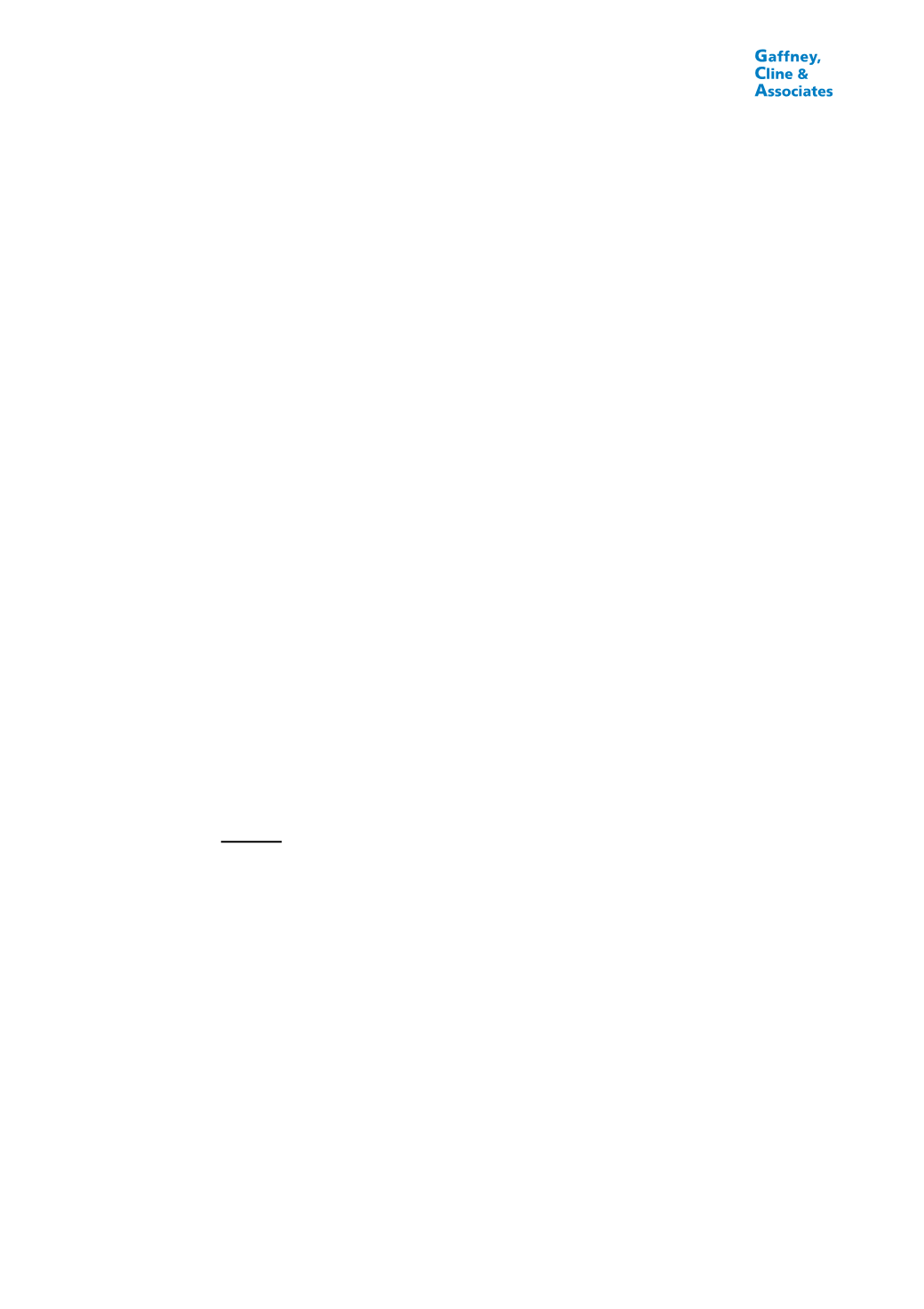
Kuwait Energy
EL-12-211107
51
The planned Mansuriya production facilities comprise wells and flow-lines to a central
reception and hydrocarbon dew point plant, and export compression and pipelines. Cost
estimates have been provided by the Operator, including:
US$7.8 MM for drilling and completing a development well;
US$10 MM for an appraisal well;
US$25 MM for the deep exploration well;
US$1,088 MM total facilities and pipeline costs;
US$161 MM of Supplementary Costs, related mainly to security issues;
Owner’s costs of approximately US$70 MM p.a.; and
US$65 MM p.a. OPEX (including G&A but excluding owner’s costs) at plateau
rate, reducing to US$50 MM p.a. after production starts to decline.
The presence of H
2
S and CO
2
in the gas contributes significantly to the facilities, pipeline
and well costs, which GCA has reviewed and considers to be reasonable.
In 2012, 150 km
2
of 3D seismic data were acquired and processed. Interpretation by the
Operator was completed by end 2013. In December, 2012, Mansuriya-2 was re-entered
and flowed at an average of 27 MMscfd over a 7-hour test period; surface samples were
taken. The FEED study for the facilities and pipelines was completed in 2013 and
evaluation of bids for the EPC contract was ongoing in May, 2014.
The planned work-overs and appraisal well drilling was delayed by difficulty in finding a
drilling contractor, due to the security situation. However, planned activity in 2014 now
includes working over four of the existing wells. Two appraisal wells and three
development wells are planned to be drilled in 2015, with ten further development wells
drilled from 2016 to early 2018. The deep exploration well would be drilled in 2017. As a
result of the delays, gas production is now expected to start in 2017 (more than one year
later than originally envisaged) using both the 175 MMscfd wet gas capacity trains, at the
plateau production of 320 MMscfd. Ten further wells would be drilled later on (2022-
2025) to maintain the plateau production rate. Under this revised production schedule,
the requirement to achieve production of at least 25% of the plateau rate no more than 3
years after the approval of the PDP will be missed, although there is no direct financial
penalty for this.
3.3
Block 9
KE holds a 70% WI in Block 9 and is the Operator. The other partner is Dragon Oil
(Holdings) Ltd, with a 30% WI. The Block is located in southern Iraq (Figure 3.1), and is
governed by an Exploration, Development and Production Service Contract (EDPSC),
which has an effective date of 3
rd
February, 2013. The Yadavaran field to the east
extends into the Block, where it is provisionally named B9NE, and the Nahr Umr field to
the west may also extend into it (the potential extension is provisionally named B9W).
The EDPSC will run for a maximum of 30 years, starting with a 5-year exploration period.
A 20-year development license would be granted for each commercial discovery, with a
possible 5-year extension subject to newly negotiated terms and conditions. Note that
Block 9 is designated as an Oil Block and it is expected that any discovery would be an
oil discovery. If non-associated gas were to be discovered, different conditions would
apply.
Once a discovery is made and appraised, a Development Area will be designated.
Development plans must be submitted for approval and the Ministry of Oil does have the
option to impose a Holding Period of up to 7 years before development (the duration of


